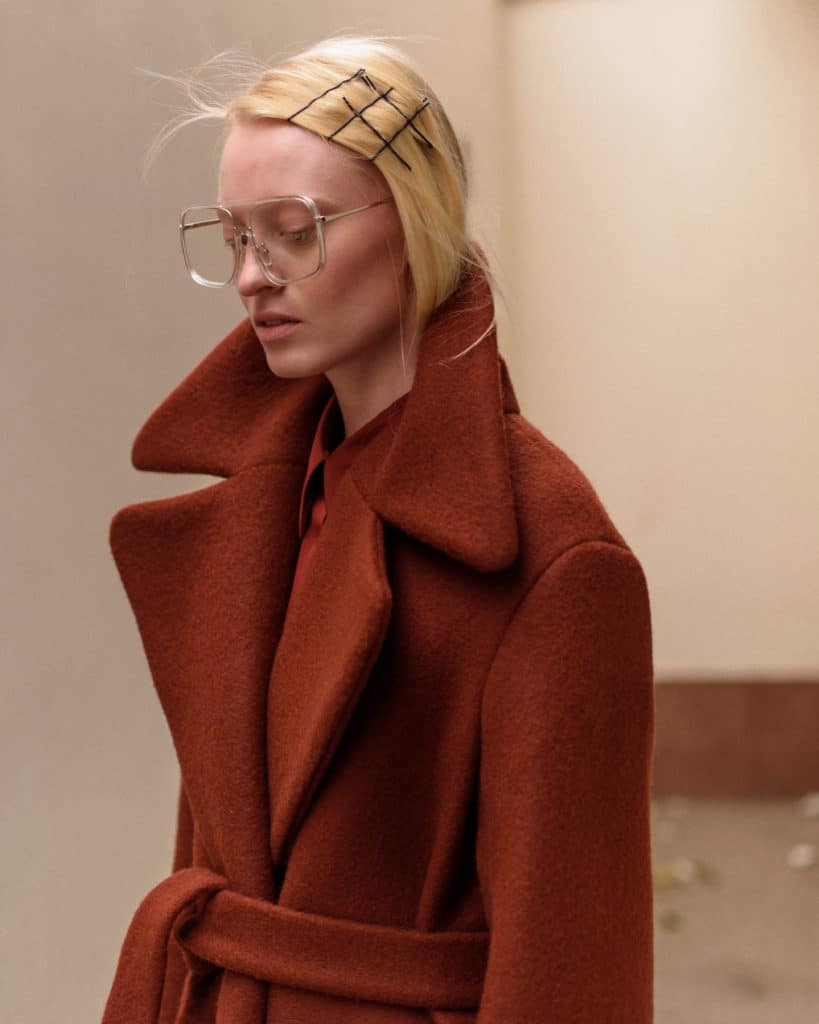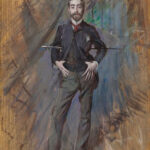High Fashion Models are the face of luxury brands and haute couture, gracing runways and magazine covers, and you can discover what it takes to break into this exclusive world here at mens-fashion.net. This article delves into the requirements, career paths, and insider tips for aspiring male and female models, giving you actionable insights to navigate the competitive industry. We’ll cover everything from portfolio development to runway techniques, all while keeping you updated on the latest fashion trends and opportunities.
1. What Exactly is High Fashion Modeling?
High fashion modeling is an exclusive segment of the modeling industry focused on showcasing high-end clothing and accessories for top designers and luxury brands. Unlike commercial modeling, which aims to sell products to a broad audience, high fashion modeling emphasizes artistry, creativity, and a unique aesthetic.
High fashion is not merely about selling clothes; it’s about embodying a brand’s vision and artistry. High fashion models are seen as walking canvases, bringing designers’ creative visions to life on runways and in editorial spreads. According to research from the Fashion Institute of Technology (FIT), the most successful high fashion models possess a combination of striking looks, professionalism, and the ability to adapt to different creative concepts.
2. What Distinguishes High Fashion from Commercial Modeling?
High fashion modeling differs from commercial modeling in several key aspects, including physical requirements, target market, and career trajectory.
| Feature | High Fashion Modeling | Commercial Modeling |
|---|---|---|
| Physical Requirements | Strict height and measurement standards; often unconventional looks | More relaxed standards; focuses on relatability |
| Target Market | Luxury brands, high-end consumers | Everyday consumers |
| Focus | Artistry, brand image, runway presence | Selling products, appealing to a broad audience |
| Pay Scale | Potentially higher, but more competitive | More consistent work, but potentially lower pay |
| Fame Level | Greater potential for international recognition | Less public attention, more localized opportunities |
3. Who are Some Famous High Fashion Models?
Numerous high fashion models have achieved international fame, becoming household names and influential figures in the fashion industry.
Some famous high fashion models include:
- Kendall Jenner: Known for her work with top brands like Chanel and Givenchy.
- Gigi Hadid: A prominent figure in runway shows and ad campaigns for Versace and Fendi.
- Bella Hadid: Recognized for her striking looks and collaborations with Dior and Bulgari.
- Naomi Campbell: An iconic supermodel who has graced countless magazine covers and runways.
- Adriana Lima: Best known for her work with Victoria’s Secret and her long-standing career in high fashion.
These models have not only achieved fame but also significantly impacted the fashion world, setting trends and inspiring aspiring models.
 Kendall Jenner at a fashion show, showcasing a high-fashion design
Kendall Jenner at a fashion show, showcasing a high-fashion design
4. What Height is Typically Required for High Fashion Models?
High fashion modeling typically demands specific height requirements, generally setting a minimum standard for both men and women.
The height requirements for high fashion models are typically:
- Female Models: Generally, female high fashion models are required to be 5’9″ (175 cm) or taller.
- Male Models: Male high fashion models usually need to be 6’0″ (183 cm) or taller.
These height standards are in place because designers often create clothing with these proportions in mind, and taller models can showcase garments more effectively on the runway.
5. What Other Physical Attributes are Important in High Fashion?
Besides height, several other physical attributes play a crucial role in determining success in high fashion modeling.
Other important physical attributes include:
- Proportional Build: A balanced physique with well-defined features is essential.
- Clear Skin: High fashion modeling often requires flawless skin, as the focus is on showcasing the clothing and makeup.
- Unique Look: A distinctive appearance that sets a model apart from the competition is highly valued.
- Youthful Appearance: High fashion models are often young, typically starting their careers in their teens or early twenties.
According to insights from top modeling agencies, maintaining a healthy lifestyle and skincare routine is vital for preserving these attributes.
6. How Important is Age in High Fashion Modeling?
Age is a significant factor in high fashion modeling, with the industry generally favoring younger individuals.
The typical age range for high fashion models is:
- Female Models: Usually between 16 and 25 years old.
- Male Models: Typically between 18 and 30 years old.
However, there are exceptions, and some models continue to work successfully beyond these age ranges. The industry often values fresh faces and youthful energy, which align with the ever-evolving trends and demands of high fashion.
7. What Body Measurements are Typically Expected of High Fashion Models?
Specific body measurements are often expected of high fashion models, particularly for women, to ensure they fit sample sizes and showcase clothing as intended by designers.
The typical body measurements for female high fashion models are:
- Bust: 32-34 inches (81-86 cm)
- Waist: 24-26 inches (61-66 cm)
- Hips: 34-36 inches (86-91 cm)
While these measurements are a guideline, proportionality and overall physique are also important considerations. Male models also have expected measurements, generally focusing on height, chest, and waist ratios to fit tailored garments.
8. How Can I Develop a Strong High Fashion Portfolio?
Building a strong high fashion portfolio is crucial for attracting the attention of modeling agencies and securing work.
Key steps to developing a high fashion portfolio include:
- Professional Photoshoots: Collaborate with experienced photographers who specialize in high fashion to capture high-quality images.
- Diverse Looks: Showcase a range of different styles, poses, and expressions to demonstrate versatility.
- Editorial Focus: Include images that resemble those found in high fashion magazines like Vogue or Harper’s Bazaar.
- Quality over Quantity: Select only the best images that highlight your strengths and potential.
According to top modeling agents, a well-curated portfolio can significantly increase your chances of getting signed and landing jobs.
9. What Kind of Training is Beneficial for High Fashion Models?
Specific training can greatly benefit aspiring high fashion models, helping them develop the skills and techniques needed to succeed in the industry.
Beneficial training includes:
- Runway Training: Learning how to walk confidently and gracefully on the runway is essential.
- Posing Techniques: Mastering different poses and angles to create visually appealing images.
- Acting Classes: Improving facial expressions and conveying emotions to enhance storytelling through photoshoots.
- Fashion Knowledge: Understanding fashion history, designers, and current trends to better embody different styles.
Many modeling agencies offer training programs to help new models develop these skills and prepare for the demands of the industry.
10. How Do High Fashion Models Utilize Social Media?
Social media plays a vital role in the careers of high fashion models, providing a platform for self-promotion, brand partnerships, and fan engagement.
Effective social media strategies include:
- Professional Content: Posting high-quality images and videos that showcase modeling work and personal style.
- Consistent Engagement: Interacting with followers, responding to comments, and building a strong online presence.
- Brand Collaborations: Partnering with fashion brands and designers to promote products and increase visibility.
- Networking: Connecting with industry professionals, such as photographers, stylists, and agents.
Top models often have millions of followers and use their platforms to influence trends, advocate for causes, and build their personal brands.
11. What Agencies Should Aspiring High Fashion Models Target?
Targeting the right modeling agencies is crucial for aspiring high fashion models, as these agencies have the connections and resources to help launch and manage careers.
Some top modeling agencies to consider include:
- IMG Models: Known for representing some of the biggest names in the industry.
Address: 304 Park Ave S #12th, New York, NY 10010, United States
Phone: +1 212-253-8800
Website: imgmodels.com - Ford Models: A reputable agency with a long history of representing high fashion models.
Address: 111 5th Ave, New York, NY 10003, United States
Phone: +1 212-219-0222
Website: fordmodels.com - Elite Model Management: A global agency with a strong presence in the high fashion world.
Address: 247 W 37th St 19th floor, New York, NY 10018, United States
Phone: +1 212-253-2700
Website: elitemodel.com - Women Management: Specializes in representing high fashion models with unique and distinctive looks.
Address: 199 Lafayette St 6th floor, New York, NY 10012, United States
Phone: +1 212-226-3030
Website: womenmanagement.com
Researching each agency’s roster and submission guidelines can help models identify the best fit for their careers.
12. How Can Aspiring Models Prepare for Agency Submissions?
Preparing effectively for agency submissions can significantly increase an aspiring model’s chances of getting signed.
Key steps include:
- Professional Headshots: Obtaining clear, high-quality headshots that showcase natural beauty.
- Portfolio Review: Ensuring the portfolio is up-to-date and highlights the best modeling work.
- Research Agencies: Identifying agencies that represent models with similar looks and career goals.
- Follow Guidelines: Adhering to each agency’s specific submission requirements, such as photo formats and information to include.
According to advice from modeling scouts, presenting a polished and professional image is essential for making a positive first impression.
13. What Runway Techniques are Essential for High Fashion Models?
Mastering runway techniques is crucial for high fashion models, as it allows them to showcase clothing effectively and captivate audiences.
Essential runway techniques include:
- Posture: Maintaining a straight back and confident stance to project elegance and poise.
- Gait: Developing a smooth, controlled walk with a deliberate pace and stride length.
- Eye Contact: Engaging with the audience and projecting confidence through focused eye contact.
- Posing: Pausing briefly at the end of the runway to strike a pose that highlights the garment and personal style.
Runway training and practice are vital for refining these techniques and creating a memorable presence on the catwalk.
14. What is the Role of a Stylist in High Fashion Modeling?
Stylists play a crucial role in high fashion modeling, collaborating with models, photographers, and designers to create cohesive and visually stunning images.
The responsibilities of a stylist include:
- Clothing Selection: Choosing outfits that align with the overall theme and aesthetic of the photoshoot or runway show.
- Accessory Coordination: Selecting accessories, such as jewelry, shoes, and handbags, to complement the clothing.
- Hair and Makeup Direction: Collaborating with hair and makeup artists to create looks that enhance the model’s features and convey the desired message.
- Trend Forecasting: Staying up-to-date with the latest fashion trends and incorporating them into styling choices.
According to insights from industry professionals, a skilled stylist can elevate a model’s performance and contribute significantly to the success of a project.
15. What is the Importance of Networking in the High Fashion Industry?
Networking is essential in the high fashion industry, as it allows models to build relationships, gain exposure, and access opportunities.
Effective networking strategies include:
- Attending Events: Participating in fashion shows, industry parties, and networking events to meet professionals and potential collaborators.
- Building Relationships: Connecting with photographers, stylists, designers, and agents to create a strong support network.
- Online Engagement: Utilizing social media platforms like LinkedIn and Instagram to connect with industry members and stay informed about opportunities.
- Professionalism: Maintaining a professional demeanor and respectful attitude in all interactions.
According to insights from successful models, building genuine relationships and nurturing connections can open doors to new opportunities and career advancement.
16. How Can Models Stay Updated on the Latest High Fashion Trends?
Staying updated on the latest high fashion trends is crucial for models to remain relevant, adapt to evolving styles, and showcase their versatility.
Effective strategies for staying informed include:
- Reading Fashion Magazines: Subscribing to and regularly reading magazines like Vogue, Harper’s Bazaar, and Elle to stay informed about current trends and designers.
- Following Fashion Blogs and Websites: Monitoring reputable fashion blogs and websites for the latest news, runway reviews, and style insights.
- Attending Fashion Shows: Attending local and international fashion shows to observe upcoming trends firsthand.
- Social Media: Following influential fashion figures, designers, and brands on social media platforms like Instagram and Twitter.
According to advice from industry experts, staying informed about trends can help models anticipate demands and position themselves for relevant opportunities.
17. What are Some Common Challenges Faced by High Fashion Models?
High fashion models often face unique challenges due to the industry’s demanding nature, strict standards, and intense competition.
Common challenges include:
- Maintaining Physical Standards: Adhering to strict height, weight, and measurement requirements, which can be difficult and unhealthy.
- Rejection: Facing frequent rejection from agencies, castings, and jobs due to the competitive nature of the industry.
- Travel and Time Commitment: Spending significant time traveling for shoots, shows, and meetings, which can be disruptive to personal life.
- Financial Instability: Experiencing periods of inconsistent income and financial uncertainty, especially early in their careers.
According to insights from experienced models, developing resilience, seeking support, and maintaining a healthy work-life balance are crucial for overcoming these challenges.
18. How Can Models Maintain a Healthy Lifestyle While Meeting Industry Demands?
Maintaining a healthy lifestyle is crucial for high fashion models to sustain their energy, physique, and overall well-being amidst the industry’s demands.
Effective strategies include:
- Balanced Diet: Consuming a nutrient-rich diet that provides adequate energy and supports physical health.
- Regular Exercise: Engaging in regular physical activity to maintain fitness and manage stress.
- Adequate Sleep: Prioritizing sufficient sleep to promote recovery and mental clarity.
- Stress Management: Implementing stress-reduction techniques, such as yoga, meditation, or mindfulness, to cope with pressure.
According to health and wellness experts, prioritizing self-care and maintaining a healthy lifestyle can enhance models’ performance and longevity in the industry.
19. What Ethical Considerations Should High Fashion Models Be Aware Of?
High fashion models should be aware of ethical considerations within the industry to ensure they uphold responsible practices and protect their well-being.
Key ethical considerations include:
- Fair Treatment: Advocating for fair treatment and compensation in contracts, working conditions, and payment terms.
- Body Image: Promoting positive body image and avoiding the perpetuation of unrealistic beauty standards.
- Environmental Sustainability: Supporting brands and initiatives that prioritize environmental sustainability and ethical production practices.
- Consent and Safety: Ensuring they are treated with respect, their consent is obtained for all activities, and their safety is prioritized on set.
According to ethical guidelines, models have a responsibility to use their platform to promote positive values and advocate for responsible practices within the fashion industry.
20. What are Some Alternative Career Paths for Former High Fashion Models?
Former high fashion models often transition into alternative career paths, leveraging their experience, network, and skills gained in the industry.
Potential career paths include:
- Acting: Pursuing acting roles in film, television, or theater, utilizing their on-camera presence and performance skills.
- Design: Venturing into fashion design, creating their own clothing lines or collaborating with established brands.
- Blogging and Influencing: Becoming fashion bloggers or influencers, sharing their style insights, experiences, and recommendations with a broad audience.
- Consulting: Offering consulting services to brands, agencies, or aspiring models, sharing their industry knowledge and expertise.
According to career development experts, transitioning models can leverage their unique skills and experiences to create fulfilling and successful post-modeling careers.
Embark on your journey into the world of high fashion with confidence and the right resources. At mens-fashion.net, we provide the latest trends, essential advice, and exclusive insights to help you excel. Don’t just dream about the runway—make it your reality. Visit us today to explore our comprehensive guides and become part of a community dedicated to fashion excellence. Your future in high fashion awaits!

